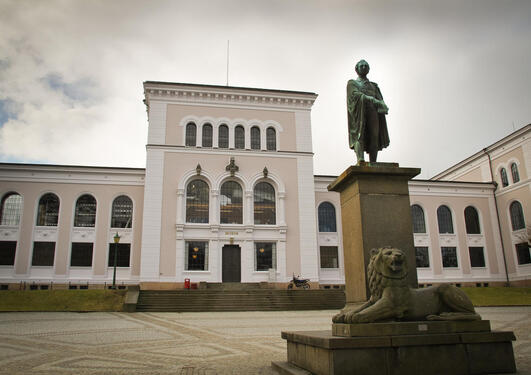Daniel James: "On Being Off-White: Towards a Theory of Partial Racialisation"
The Critical Theories Colloquium invites to a further guest talk by Daniel James (HU Berlin). The talk is going to discuss processes of "partial" racialisation that underlie important varieties of racism such as anti-Semitism, anti-Slavism and anti-Muslimism.

Main content
In 2022, Whoopi Goldberg stated that the Holocaust “isn’t about race”, but, instead, merely about “man’s inhumanity to man” insofar as it involved “two White groups of people.” On the other side of the Atlantic, commentators expressed dismay over what they considered a parochial US-American view of race. For instance, historians Hans-Christian Petersen and Jannis Panagiotidis concede that “for the US debate, from which the focus on the category ‘whiteness’ emerges, the legacy of the ‘colour line’ is undoubtedly constitutive”. However, they contend that “such a dichotomous understanding is insufficient for understanding German racism” (Petersen & Panagiotidis 2022, my translation). To account for varieties of racism that – like anti-Semitism or anti-Slavism – are particularly salient in the European context, some theorists of race appeal to the idea that whiteness comes in degrees. In particular, Charles Mills outlines an account of global white supremacy that explicitly addresses the social position of “peoples who would today be thought of as uncontroversially white—the Irish, Slavs, Mediterraneans, Jews” (Mills 1997: 76). He suggests that we “retain but “fuzzify” the categories, introducing internal distinctions within them” (Mills 1997: 79). Accordingly, he accommodates the “fuzzy” social position of, for instance, Jews or Slavs in the social structure of white supremacy by “the category of ‘off-white’ rather than nonwhite (ibid.: 80). When he here claims that “[t]his is not to say that they are fully white” (ibid.: 80), he implicitly appeals to the idea that they are only partially racialised as white. However, to account for how these groups can also be affected by racism, this idea needs to be explicated.
To do so, I will proceed from an idea popularised by philosopher Lawrence Blum (2002, 2010): the idea of partial racialisation. Building on Blum’s idea, Adam Hochman (2017, 2019) claims that such racialisation can also occur covertly, for instance, in the case of ethnoreligious groups such as Jews or Muslims. If we seek to apply this idea to the phenomena mentioned above, two shortcomings become apparent. For one, although both authors highlight that such racialisation is best understood as a process, neither elaborates how such a process can amount to imperfect membership in a racialised group. For another, neither elaborates how processes of racialisation interact with the formation of such groups, as in the case of the covert racialisation of ethnic or religious groups.
To address both, I will first build on Griffiths’s (2020) recent explication of Mills’s account of racialisation in terms of functional roles and show that it allows for what Lewis (1994) has called a “satisficing analysis” of what it would take to deserve the predicate “white” perfectly and to deserve it well enough. Second, in light of recent theories of processes in metaphysics (e.g., Seibt 2004a+b, 2009, 2018), I will take that analysis to suggest an account of racialisation as a process of development that can be accomplished to a greater or lesser degree. Third, I will identify that accomplishment with full racialisation, which I will characterise in terms of racialism: the view that races are distinguished in terms of bio-behavioural essences (Appiah 1990). I will then suggest that we can characterise varieties of partial racialisation, such as culturalism concerning Muslims, in terms of the incorporation of racialist elements into other descent-based concepts, such as ethnicity or religion (Maneri & Morning 2024). Specifically, I will illustrate the account thus outlined by elaborating on Mills’s own example: the ambiguous racialisation of Jews in the United States (Goldstein 2006; Schraub 2019).

